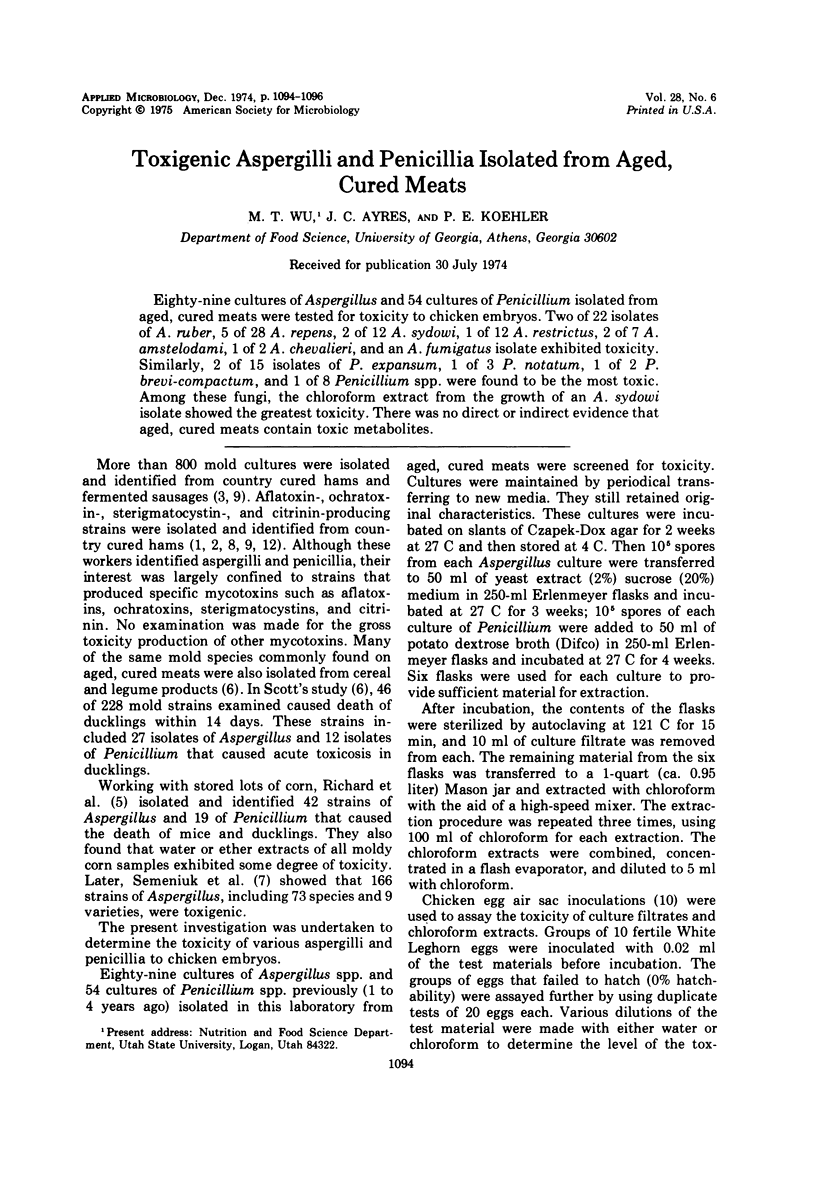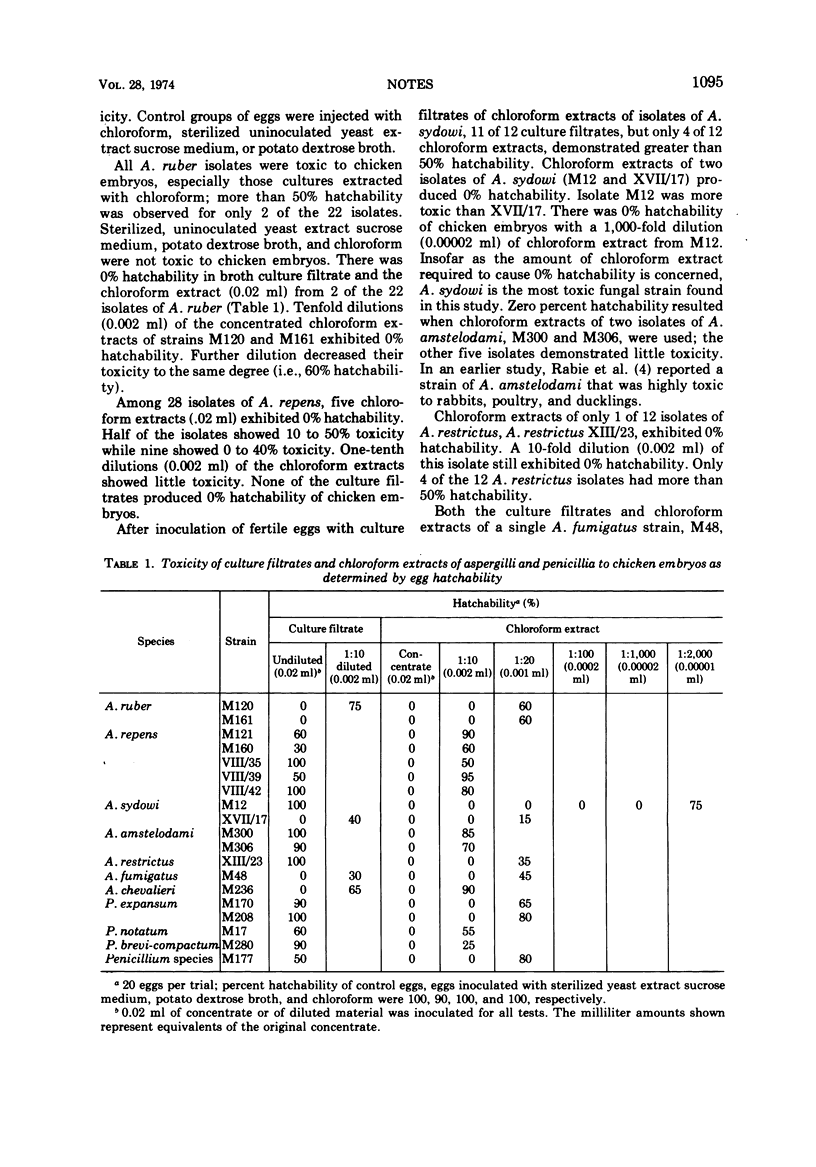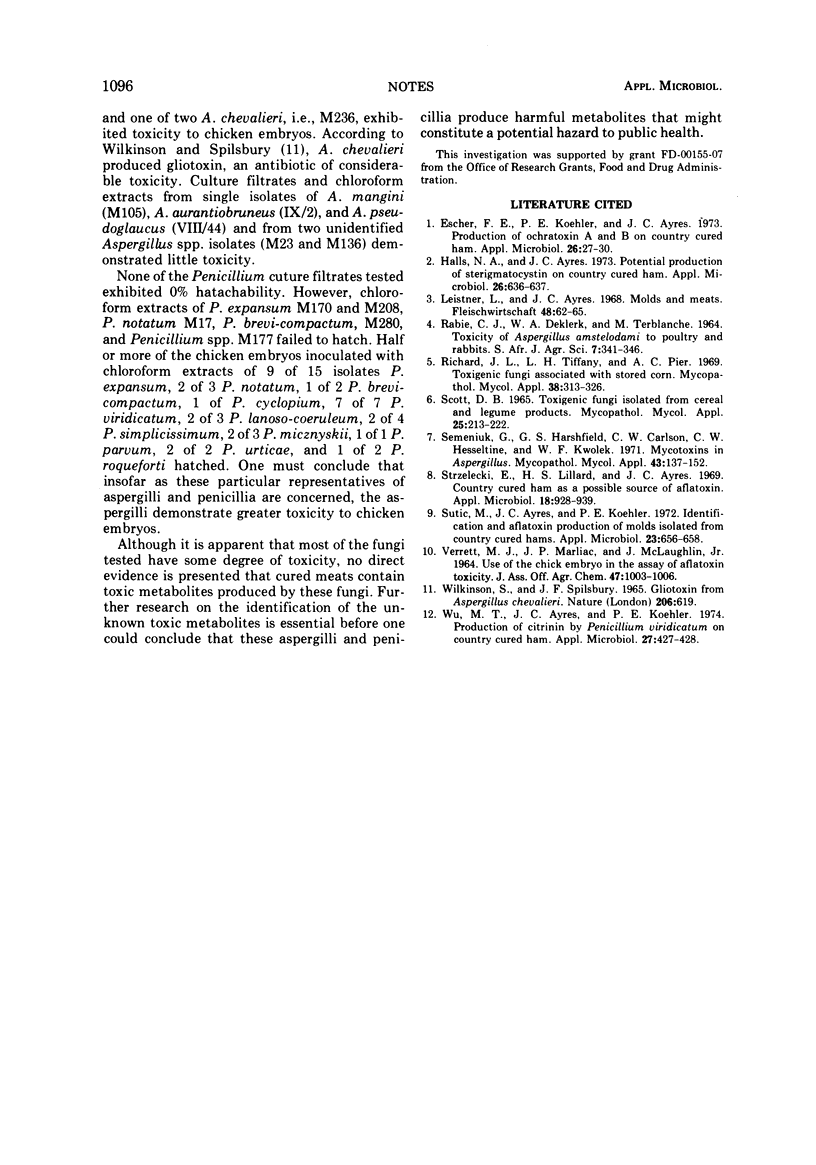Abstract
Eighty-nine cultures of Aspergillus and 54 cultures of Penicillium isolated from aged, cured meats were tested for toxicity to chicken embryos. Two of 22 isolates of A. ruber, 5 of 28 A. repens, 2 of 12 A. sydowi, 1 of 12 A. restrictus, 2 of 7 A. amstelodami, 1 of 2 A. chevalieri, and an A. fumigatus isolate exhibited toxicity. Similarly, 2 of 15 isolates of P. expansum, 1 of 3 P. notatum, 1 of 2 P. brevi-compactum, and 1 of 8 Penicillium spp. were found to be the most toxic. Among these fungi, the chloroform extract from the growth of an A. sydowi isolate showed the greatest toxicity. There was no direct or indirect evidence that aged, cured meats contain toxic metabolites.
Full text
PDF


Selected References
These references are in PubMed. This may not be the complete list of references from this article.
- Escher F. E., Koehler P. E., Ayres J. C. Production of ochratoxins A and B on country cured ham. Appl Microbiol. 1973 Jul;26(1):27–30. doi: 10.1128/am.26.1.27-30.1973. [DOI] [PMC free article] [PubMed] [Google Scholar]
- Halls N. A., Ayres J. C. Potential production of sterigmatocystin on country-cured ham. Appl Microbiol. 1973 Oct;26(4):636–637. doi: 10.1128/am.26.4.636-637.1973. [DOI] [PMC free article] [PubMed] [Google Scholar]
- Richard J. L., Tiffany L. H., Pier A. C. Toxigenic fungi associated with stored corn. Mycopathol Mycol Appl. 1969;38(4):313–326. doi: 10.1007/BF02052878. [DOI] [PubMed] [Google Scholar]
- Scott D. B. Toxigenic fungi isolated from cereal and legume products. Mycopathol Mycol Appl. 1965 Apr 14;25(3):213–222. doi: 10.1007/BF02049914. [DOI] [PubMed] [Google Scholar]
- Semeniuk G., Harshfield G. S., Carlson C. W., Hesseltine C. W., Kwolek W. F. Mycotoxins in Aspergillus. Mycopathol Mycol Appl. 1971 Feb 19;43(2):137–152. doi: 10.1007/BF02051714. [DOI] [PubMed] [Google Scholar]
- Strzelecki E., Lillard H. S., Ayres J. C. Country cured ham as a possible source of aflatoxin. Appl Microbiol. 1969 Nov;18(5):938–939. doi: 10.1128/am.18.5.938-939.1969. [DOI] [PMC free article] [PubMed] [Google Scholar]
- Sutic M., Ayres J. C., Koehler P. E. Identification and aflatoxin production of molds isolated from country cured hams. Appl Microbiol. 1972 Mar;23(3):656–658. doi: 10.1128/am.23.3.656-658.1972. [DOI] [PMC free article] [PubMed] [Google Scholar]
- Wilkinson S., Spilsbury J. F. Gliotoxin from Aspergillus chevalieri (Mangin) Thom et Church. Nature. 1965 May 8;206(984):619–619. doi: 10.1038/206619a0. [DOI] [PubMed] [Google Scholar]
- Wu M. T., Ayres J. C., Koehler P. E. Production of citrinin by Penicillium viridicatum on country-cured ham. Appl Microbiol. 1974 Feb;27(2):427–428. doi: 10.1128/am.27.2.427-428.1974. [DOI] [PMC free article] [PubMed] [Google Scholar]


